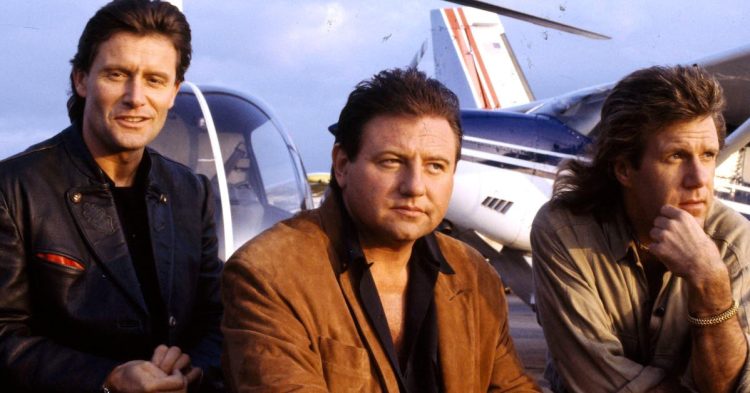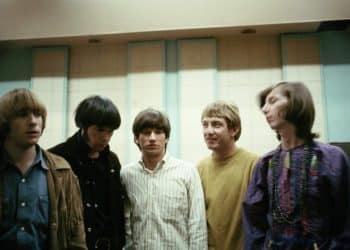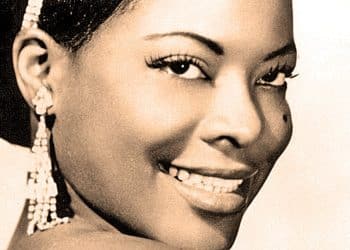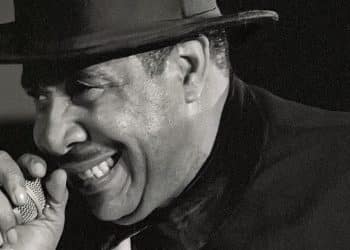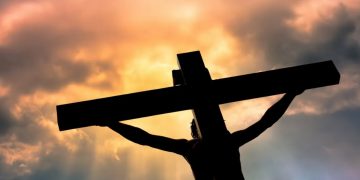Emerson, Lake & Palmer (ELP) is one of the most iconic progressive rock bands of all time, a powerful trio that redefined what it meant to push musical boundaries. Known for their breathtaking virtuosity, innovative compositions, and electrifying stage performances, the band fused rock, classical, and electronic elements into a sound that was entirely their own. With Greg Lake’s soulful voice and masterful bass work, Keith Emerson’s revolutionary keyboard wizardry, and Carl Palmer’s intricate, high-energy drumming, ELP created some of the most memorable and ambitious music in rock history.
In this article, we dive into the top 10 most popular Emerson, Lake & Palmer songs—the tracks that have stood the test of time and continue to captivate listeners across generations. From sweeping epics to explosive instrumentals, these songs showcase the band’s unparalleled artistry and their ability to turn music into a transcendental experience. Whether you’re a lifelong fan or just discovering the magic of ELP, you’ll find yourself transported by this journey through their greatest hits. Prepare to relive the brilliance of tracks that defined an era and cemented ELP’s place as legends of progressive rock. Let’s dive into the soundscapes that changed the world of music forever!
1. Lucky Man (1970)
“Lucky Man” stands as one of Emerson, Lake & Palmer’s most iconic and emotionally resonant songs. Penned by Greg Lake when he was just a teenager, the track’s simplicity is part of its magic. It tells the bittersweet story of a man who had it all—wealth, power, and status—only to meet a tragic end, a reminder of how fleeting life’s fortunes can be. The acoustic guitar, played gently by Lake, sets a reflective tone that contrasts with the weight of the lyrics. But the true standout moment comes at the end with Keith Emerson’s spontaneous Moog synthesizer solo—a swirling, spacey burst of sound that added a modern, otherworldly touch to an otherwise traditional folk ballad. Ironically, that now-legendary solo was added almost as an afterthought, recorded in just one take. “Lucky Man” became the band’s first hit single and remains a timeless entry point for new listeners discovering ELP’s music. It’s a perfect blend of simplicity and complexity, tenderness and drama, acoustic purity and electronic innovation—qualities that would define the band’s sound for years to come.
2. Karn Evil 9: 1st Impression, Pt. 2 (1973)
Few lines in progressive rock are as instantly recognizable as “Welcome back, my friends, to the show that never ends!” With that energetic declaration, Emerson, Lake & Palmer fling open the doors to the dazzling, chaotic world of “Karn Evil 9: 1st Impression, Pt. 2.” This track, part of the sprawling “Karn Evil 9” suite on Brain Salad Surgery, is a bold display of the band’s fearless creativity. Greg Lake’s vocals are theatrical and commanding, guiding listeners through a surreal spectacle of a society obsessed with entertainment and spectacle. Keith Emerson’s lightning-fast keyboard runs and Carl Palmer’s propulsive drumming inject the song with nonstop momentum. There’s an almost carnival-like madness to it all, with dramatic shifts in tone, tempo, and mood. It’s not just a song—it’s an experience, a musical rollercoaster that captures the frenetic energy of a futuristic dystopia. Over time, this track has become a definitive ELP anthem, often used to open their live shows. It embodies everything that made the band unique: virtuosic musicianship, grand conceptual vision, and a willingness to push the limits of rock music into something theatrical, absurd, and completely unforgettable.
3. Tarkus (1971)
“Tarkus” isn’t just a song—it’s a full-blown musical saga. Clocking in at over 20 minutes and divided into seven distinct sections, this epic from ELP’s second album redefined what progressive rock could be. The story follows Tarkus, a half-armadillo, half-tank creature, through a surreal battle for survival in a world of mechanized beasts and shifting allegiances. It’s abstract and symbolic, exploring ideas of evolution, conflict, and resilience. Musically, it’s a tour de force: Keith Emerson leads the charge with virtuosic keyboard work, navigating shifting time signatures and complex melodies with jaw-dropping agility. Greg Lake’s vocals carry both menace and vulnerability, while Carl Palmer’s drumming is relentless, propelling the piece forward with raw intensity. The sheer ambition of “Tarkus” was a bold move in 1971, pushing rock music into more conceptual and classically influenced territory. Despite its complexity, it remains one of the band’s most celebrated achievements—a staple for fans and a measuring stick for prog-rock epics. Listening to “Tarkus” is like stepping into a mythic battlefield of sound, where every movement reveals a new layer of tension, beauty, and technical brilliance. It’s not just music—it’s an odyssey.
4. From the Beginning (1972)
Gentle, introspective, and beautifully understated, “From the Beginning” shows a softer side of Emerson, Lake & Palmer. Released on their Trilogy album in 1972, the track is largely a solo showcase for Greg Lake, who wrote and performed the core acoustic elements. The song’s melancholy lyrics explore the emotional distance between people, wrapped in simple but poetic reflections on love, communication, and regret. Lake’s vocals are rich with emotion, and his fingerpicked guitar melody is as soothing as it is haunting. The song takes a subtle turn about halfway through with the addition of Keith Emerson’s atmospheric Moog synthesizer, adding a dreamlike quality to the otherwise earthy acoustic ballad. Unlike the bombast and grandeur ELP is often known for, “From the Beginning” feels personal and close—like a quiet moment shared with a friend. It struck a chord with audiences upon release and quickly became one of the band’s most beloved tracks, even breaking into radio airplay. It’s a testament to Lake’s ability to write something timeless and touching without the need for complex arrangements or dramatic flair. Sometimes, the simplest songs carry the most weight.
5. Fanfare for the Common Man (1977)
When ELP took on Aaron Copland’s “Fanfare for the Common Man,” they weren’t just covering a classical piece—they were reinventing it. Released in 1977 on Works Volume 1, their version transformed Copland’s stately, patriotic theme into a thunderous rock anthem. The original fanfare was written to honor the everyday hero, and ELP took that idea and infused it with sheer power and drama. Carl Palmer’s pounding drums echo like battle cries, Keith Emerson’s synths and organ lines soar with grandeur, and Greg Lake’s bass anchors the arrangement with a steady, commanding presence. The result is a majestic, slow-building instrumental that somehow feels both reverent and rebellious. It’s rock with the soul of a symphony—bold, expansive, and cinematic. The track became a massive hit in the UK, earning chart success and becoming a staple in stadium shows and public events. It also helped bridge the gap between rock and classical audiences, showcasing the band’s unique ability to reinterpret high art in a modern, accessible way. “Fanfare for the Common Man” remains one of ELP’s most recognizable and enduring pieces—a triumphant tribute that still gives listeners goosebumps decades later.
6. Trilogy (1972)
“Trilogy,” the title track of ELP’s 1972 album, is a stunning example of the band’s ability to weave together emotion and complexity into one seamless composition. The song begins with a gentle, melancholic piano line, soon joined by Greg Lake’s tender vocals. His delivery is soft but aching, hinting at a relationship unraveling or perhaps a dream slipping away. As the lyrics float by, the music swells and shifts, gradually building in intensity. Keith Emerson’s piano playing grows more intricate, eventually exploding into a dazzling display of synthesizers and Moog madness. What began as a soft ballad morphs into a frenetic, almost chaotic instrumental workout—a rollercoaster of tempo changes and musical acrobatics. Carl Palmer’s drumming adds a dynamic pulse to the whole piece, pushing the song toward its exhilarating climax. “Trilogy” is the band at their most ambitious—blending progressive rock with classical influences, delicate emotion with explosive energy. It’s the kind of track that rewards repeated listens, as new layers reveal themselves each time. The emotional core, wrapped in musical complexity, makes “Trilogy” not just a song but a journey—a mini-symphony that encapsulates everything that made ELP so unique and forward-thinking.
7. Still… You Turn Me On (1973)
“Still… You Turn Me On” is the romantic heartbeat of Brain Salad Surgery, offering a moment of softness and sincerity amid the album’s more bombastic offerings. Written and sung by Greg Lake, the song stands out as an intimate ballad, focused on themes of longing, vulnerability, and emotional connection. Lake’s voice is front and center, rich with warmth and a quiet sense of yearning. His acoustic guitar gently picks out a melody that feels timeless, like something passed down through generations. While the lyrics are minimal and poetic, they strike a deep chord, especially in their simplicity: “Every day a little sadder, a little madder—someone get me out of here.” There’s a touch of sadness beneath the romantic tone, suggesting a love that both inspires and torments. Keith Emerson’s restrained keyboard textures add a shimmering atmosphere, enhancing the dreamlike quality of the track without overwhelming its delicate nature. The song was never released as a single, but it’s long been a fan favorite and one of Lake’s most enduring compositions. “Still… You Turn Me On” reminds us that even the most ambitious rock bands have a tender, human side—and in ELP’s case, it’s as unforgettable as their most epic moments.
8. The Barbarian (1970)
Opening with a thunderous roar of sound, “The Barbarian” kicks off ELP’s debut album with primal force and fearless ambition. Based on Béla Bartók’s Allegro Barbaro, this instrumental piece takes the raw energy of modernist classical music and infuses it with the power of rock. It’s heavy, aggressive, and unrelenting—an early showcase of the trio’s incredible chemistry and technical prowess. Keith Emerson hammers out dissonant riffs on his Hammond organ, his playing fierce and unhinged, while Greg Lake’s distorted bass lines add a growling undercurrent that pushes the piece into proto-metal territory. Carl Palmer’s drumming is muscular and precise, laying down rhythms that feel like thunder rolling across ancient battlefields. The title isn’t just for show—this song feels like a musical rampage, chaotic but tightly controlled. What makes “The Barbarian” so remarkable is how it balances wild intensity with moments of structure and discipline, shifting between furious attacks and brief, eerie calm. As the very first track on their first album, it was a bold statement: ELP wasn’t here to follow trends—they were here to break boundaries. It remains a fan favorite and a powerful reminder of the band’s classical roots and rock instincts colliding in thrilling fashion.
9. Knife-Edge (1970)
“Knife-Edge” is a dark, brooding standout from ELP’s 1970 self-titled debut, and it perfectly captures the band’s early fascination with merging classical grandeur and rock grit. Drawing inspiration from pieces by Janáček and Bach, the song’s structure is classical at heart, but its execution is pure rock theater. From the very first ominous organ riff, Keith Emerson sets a tone of tension and drama, like a storm slowly rolling in. Greg Lake’s vocals enter with a commanding presence, singing about a world on the brink—lyrics that explore themes of chaos, control, and existential dread. The imagery is stark: “Just a step cried the sad man / Take a look down at the madman.” There’s an almost apocalyptic edge to the song, made even more potent by the relentless rhythm section. Palmer’s drumming is tight and forceful, while Lake’s bass grinds underneath like a warning bell. Midway through, the song briefly shifts into a baroque interlude before diving back into its fierce, thunderous finale. “Knife-Edge” is intense, theatrical, and unrelentingly bold—a perfect example of ELP’s ability to reframe classical music through a heavy, progressive lens. It’s cerebral and visceral all at once.
10. Hoedown (1972)
“Hoedown” is one of ELP’s most energetic and joyous creations—a breakneck instrumental ride that showcases the band’s sense of humor, technical brilliance, and playful spirit. Adapted from Aaron Copland’s famous orchestral piece Rodeo, the track was released as part of 1972’s Trilogy album. Keith Emerson leads the charge, transforming Copland’s bright Americana themes into a fast-paced, synth-driven spectacle. His use of synthesizers and Hammond organ is dizzying and explosive, giving the piece a distinctly futuristic feel while preserving its roots in traditional folk dance. Greg Lake and Carl Palmer match the manic pace with tight, punchy bass lines and quick-footed drumming that makes it all feel like a wild barn dance on steroids. The transitions are razor-sharp, the tempo relentless, and the overall mood infectious. “Hoedown” became a staple in ELP’s live shows, often used as an opener to whip the audience into a frenzy. It’s a brilliant example of the trio’s talent for fusing classical motifs with the high-energy theatrics of rock, all while having a bit of fun with it. There’s no deep message here—just pure musical exhilaration, delivered with unmatched skill and flair. It’s ELP at their most lighthearted and electrifying.
